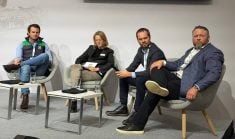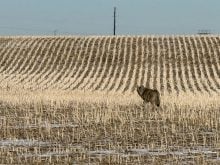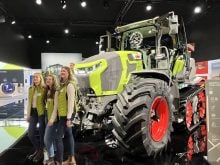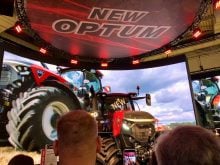RUSSELL, Man. (Staff) – Herefords haven’t been the talk of the town for a long time, but with high feed costs squeezing ranchers’ income, they might again occupy centre stage, say producers of the British breed.
Herefords are the backbone of the Canadian beef herd, but for more than a decade, non-British breeds – Charolais, Simmentals, Limousins and others – have stolen the spotlight at cattle shows because of their ability to produce bigger, leaner cattle.
But Hereford breeders at their annual meeting here June 22 were optimistic that when times are tough, the industry will return to the fundamentals.
Read Also
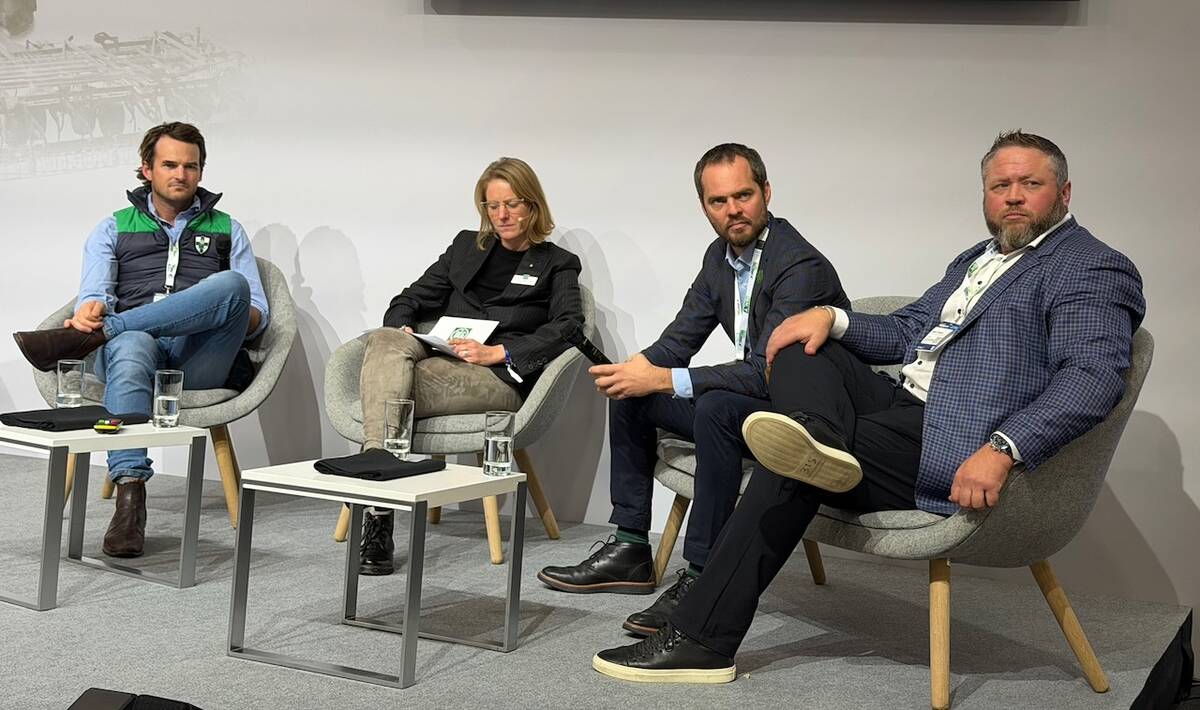
Agritechnica Day 2: The future of tractor power, building quicker crop apps and large farms and tech
Agritechnica Day 2: The future of tractor power, building quicker crop apps with Syngenta and large farms and tech
“We can finish these cattle off quicker than some of the other breeds and consequently, that keeps feed costs down for the commercial producer,” said Gil Henderson, a Canadian Hereford Association director from St. George, Ont.
“Oddly, it is to our advantage that the price of grain has gone up.”
A University of Guelph study comparing Herefords and European bulls on identical rations showed the former needed 2.3 kilograms of feed a day less and fewer days in the feedlot to reach seven millimetres of backfat, appropriate for slaughter.
Dave Hasson, a director from Ariss, Ont., agreed, but added that although the future might look good, it has been a tight spring for most purebred operations.
“If the commercial man’s income is low, obviously they have to focus on the bottom line,” he said.
“There is a tendency to lower your sights on what you spend for a bull and there is a tendency to have less turnover in your bulls.”
Duncan Porteous, association general manager, said the time is right for Hereford breeders to increase marketing. There is a debate within the association over whether it should stick to keeping records on pedigree or focus more on marketing.
He said the breed has a great history, as witnessed by the fact the association was holding its 105th annual meeting, but producers must also look to the future.
“History won’t carry us anymore. We can no longer depend on the popularity of the Hereford breed,” he said.


